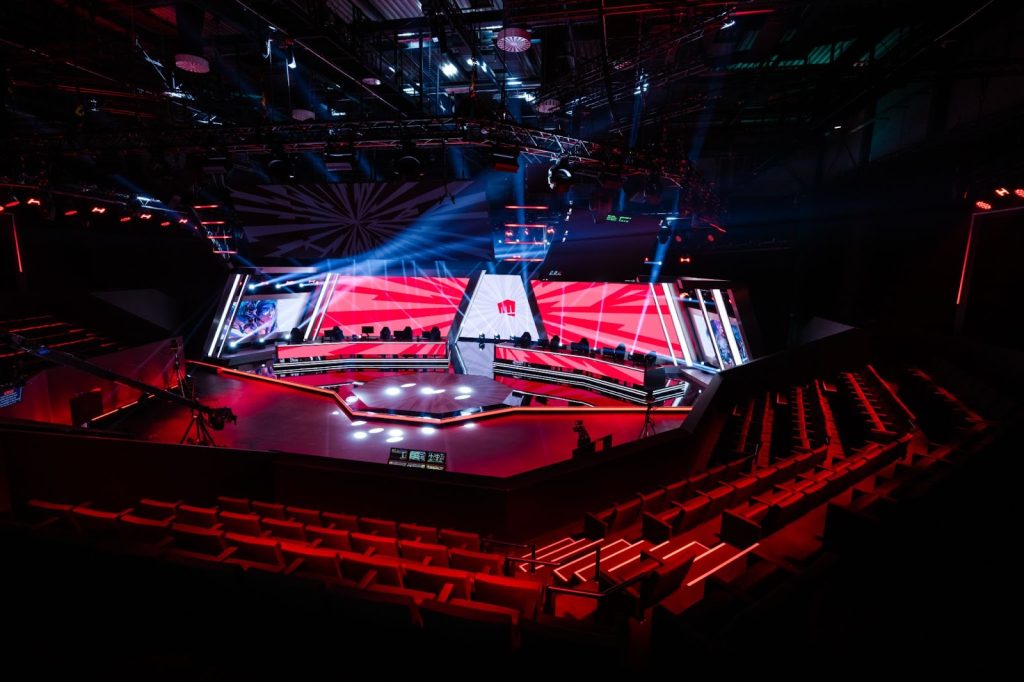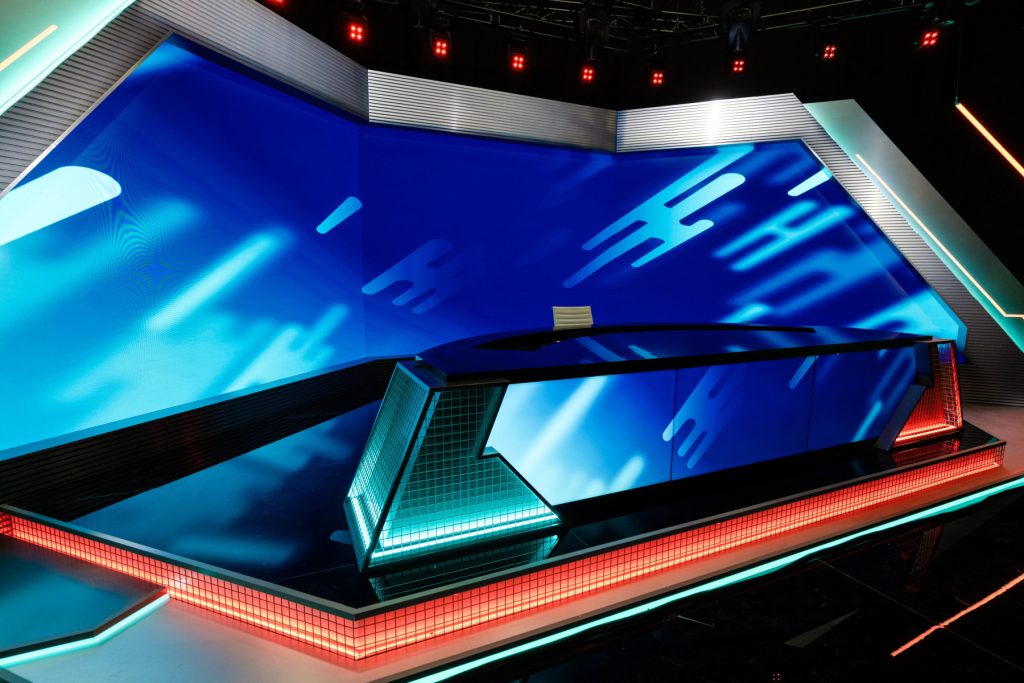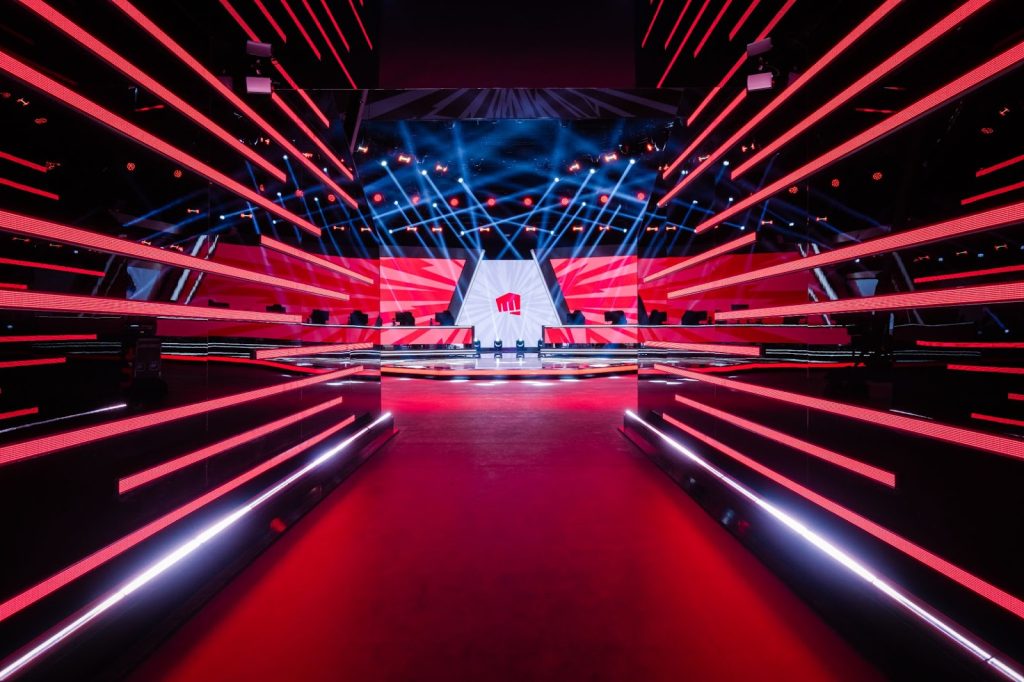
The venue formerly known as LEC Studio has undergone a significant transformation, and is now positioning itself as a centralised hub for the diverse array of esports under the Riot Games umbrella.
Based in Berlin, Germany, the new Riot Games Arena came to fruition in less than a year, as Alberto Guerrero, Head of Esports EMEA at Riot Games, shared in an exclusive interview with Esports Insider. The design started to come to life at the beginning of last year, while the physical work kicked off around September 2023, just after the LEC Season ended with the Finals in Montpellier. Doors officially open to the revamped studio on January 13th.
Diving into the strategic decision to centralise all esports events under the roof of Riot Games Arena, Guerrero focused on the organic evolution of Riot’s titles like VALORANT and Teamfight Tactics in the EMEA region, rather than on League’s success. He claimed that in less than three years Riot’s own FPS has become “a success,” and that its auto battler is “growing rapidly.”
“Proper facilities” were needed to allow this growth to continue, commented the Head of Esports, signalling that the Arena’s transformation goes beyond a physical renovation; it’s a manifestation of Riot’s commitment to a game-agnostic approach.
In practical terms, the Riot Games Arena can quickly transition between different games or esports leagues, adjusting the stage setup, venue’s graphics, and overall infrastructure to suit the specific requirements of whatever event it’s hosting. This flexibility is valuable to host tournaments for multiple games, ensuring that the venue can efficiently support the diverse needs of different titles, competitions and brands.
The new Riot Games Arena is primed to switch, almost effortlessly, between esports leagues while maintaining the standard that the audience, sponsors and partners expect of Riot Games broadcast productions. While highlighting this achievement, Guerrero disclosed that the facility can fully transform its layout and appearance to cater to a different brand “in one hour.”
This technological prowess ensures Riot’s Arena is ready for any esports competition that the future may bring, while also opening the door to hosting “alternative events” connected to other products in Riot’s diverse portfolio — like its animated series, Arcane.
“We cannot disclose any commitments now regarding Arcane or any other thing, but it’s true that this venue can offer a good experience, not just with esports,” commented Guerrero.

These events would attract the attention of an audience beyond esports — raising questions around capacity. Guerrero exclusively revealed to Esports Insider that the updated venue has a capacity of 210 seated, a roughly 20% increase over its original capacity. Addressing the challenge of audience size in light of the venue remodelling, Guerrero noted that priority was given to ”the millions of fans that are enjoying the broadcast show from home.”
The design of the Riot Games Arena balances the desire for a live audience experience with broader online viewership needs, maintaining a focus on the quality of the broadcast and fan experience from home.
Guerrero highlights the immersive nature of the new Arena, stating that overall the whole experience is going to be “more comfortable” and the show “even more vibrant.” The arena’s fan-focused upgrades include amphitheatre-style seating with new seats; a broadcast desk area that makes it easier for the talent in the Arena to interact with fans attending; and a dedicated tunnel that will make it easier for players to interact with live audiences after their matches — no more mad dashes to the stage with fingers crossed for that high-five.
Additionally, when designing the new layout, Riot Games decided it was crucial to factor in the requirements of players and teams, providing accommodation facilities for their preparation during their stay in the Arena. Adding dedicated areas for creating content and managing media — essential for smooth production and coverage by both Riot and third-party media — meant using more space in the layout, though this limited the available area for potential new seating.

Joining the teams, content and media facilities are three dedicated broadcast rooms, ready to host three languages simultaneously, with one of them being the official English broadcast; alongside two co-streaming booths overlooking the stage, which will be immediately put to the test with the 2023 LEC Winter Split; LED screens on stage and above the seating area; and cutting-edge theatrical and broadcast gear.
To match the continuous growth of its esports title, Riot opened the doors of co-streaming to a number of content creators over the past three years. The will to add two dedicated booths in the remodelled Arena signals the direction in which the company is heading, emphasising its commitment to enhancing the viewer experience — and the events’ audience size. In the EMEA region, and in particular last year, the LEC worked alongside teams and streamers to bring the competition to a broader audience. The dedicated co-streaming booths are an integral part of the venue’s design, allowing content creators to seamlessly engage with fans, according to Guerrero.
To facilitate coordination between the EMEA team and influencers across different regions, the selection process for co-streamers involves leveraging Riot Games’ network of Riot Partners regionally, although LEC teams will have a right of first refusal on the booths. “We are going to make the offer to the teams,” said Guerrero, “but they would need to bind their brand with a particular streamer.”
Many teams have established in-house streamers and content creators, which sometimes include founders or co-owners of the organisation, as it is for the recent addition to the LEC, Karmine Corp, with its founder Kamel ‘Kameto’ Kebir. This strategy can play a pivotal role in fostering fan loyalty to specific teams, generating a sense of allegiance that is vividly portrayed in the arena through enthusiastic cheers and vibrant representation. It helps create a passionate live supporter base, as witnessed during events like the Montpellier Season Finals for G2 Esports and its dedicated G2 Army.

While Riot Games declined to reveal the cost of the venue renovation, it undoubtedly required a substantial investment — a particularly bold move amid a period of financial caution in the esports industry.
In 2023, the esports landscape witnessed a tumultuous phase as several prominent organisations underwent significant layoffs, particularly esports teams. Notably, major and historic organisations opted to exit the scene entirely, even within the EMEA region. Meanwhile, after almost a decade of competitions the LCS, the North American counterpart of the LEC, saw the withdrawal of two teams from the franchised league. At a tumultuous time, the influx of new fans of the EMEA league may help reinvigorate the league, and eventually generate return on investment for Riot and its league stakeholders.
The transformation is complete for the former LEC Studio, and the doors of the new Riot Games Arena swing open this Saturday, January 13th, inviting fans to experience what Guerrero called “a new era for the esports landscape in the region.”
